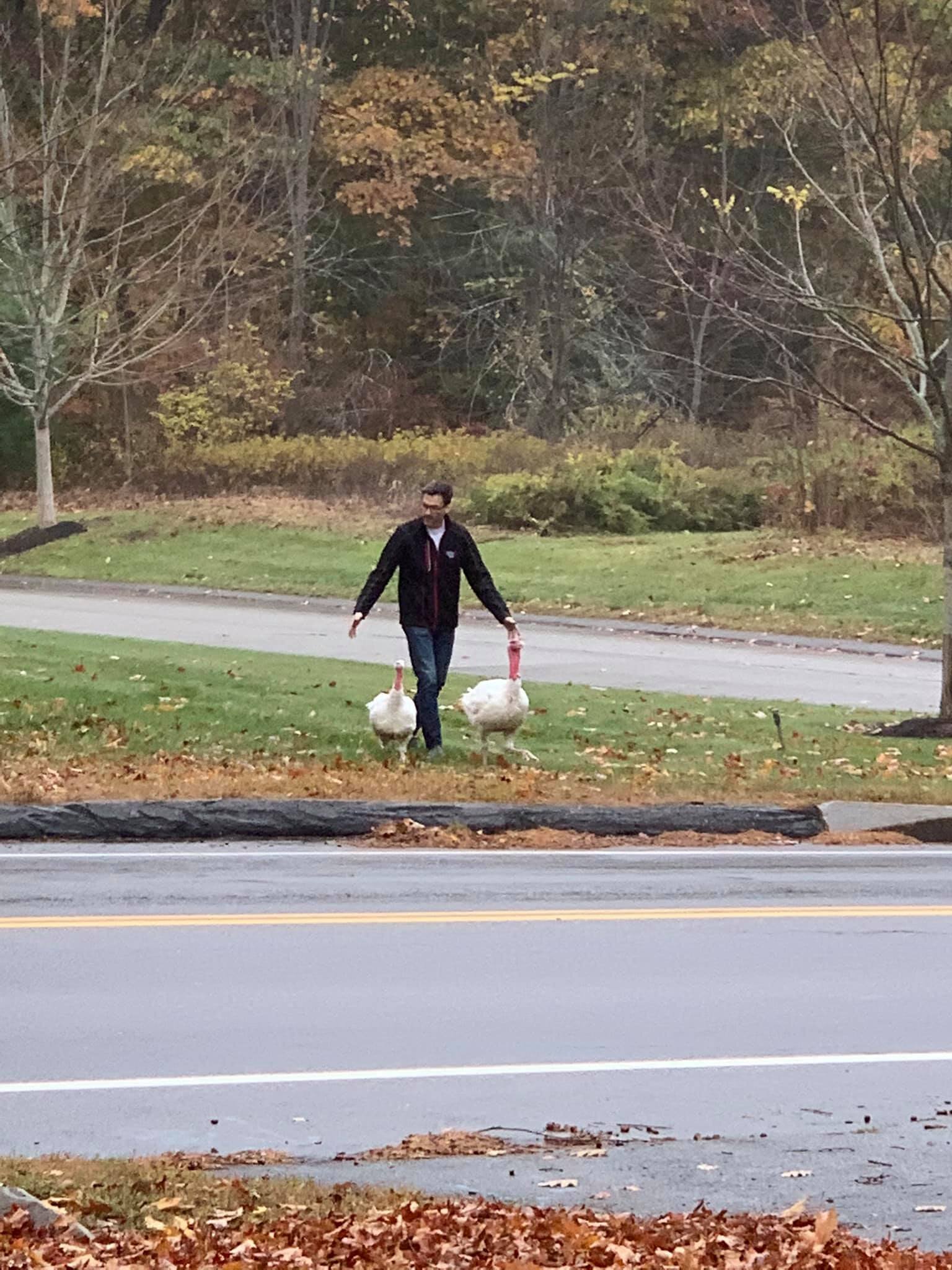Goose neck sausage. Goal: complete.
/Just before Christmas, my buddy who sourced our last goose sent me a note.
"Greg shot a pair of geese today. Much bigger than the last. Would you like one? This one has the head still!"
It has the head still? Well, of COURSE I'm going to take it.
Unlike the first one, I hung the goose from the rafters of the barn for 5 days. With game birds, the flavor can be a bit strong, and hanging them for a bit (3-7 days, per the experts) mellows the flavor.
I took it down and brought it in the kitchen to pluck. I knew I'd have a bit of mess to clean up, but it was 20 degrees outside, and that was a bit too cold for me. Fortunately, the Boy had some friends over, and I ended up with a few helpers.
This goose was really beautiful. I followed the same process as before - it was a bit quicker, and I was a bit more comfortable with the whole thing this time around. There's a point where the bird turns from "goose" to "meat" when you do this, and your brain switches into the same comfort level that you'd have in cleaning a turkey you brought home from the store.
I was, however, especially careful with the real prize of this bird: the neck.
Years ago, I had watched an episode of River Cottage, and Hugh Fearnley-Whittingstall dress out a goose and set the neck aside for a special treat. A stuffed goose neck sausage.
I have since found several recipes for this, from River Cottage and Darina Allen. Variations on the theme and method, but they all start by peeling the fatty skin back off the neck, taking care to keep it intact as one long 'tube'.
We've bought several geese from the butcher over the years (goose is always on the Christmas dinner menu), but none of them ever come whole, or with the neck. They're prettily dressed and wrapped, just like the Butterball turkey you pick up at your local grocery. So this was a real treat.
The goose roasted gorgeously, shedding tons of crystal clear fat, and browning deliciously. It wasn't quite as pretty as a farm raised goose, but I have to say I'm pretty proud of the way it turned out.
I turned my attention to the neck - I stuffed it with a pork sausage (ground fresh from our pigs), mixed with diced bacon (again: our pigs), sage, thyme, salt, white pepper and a little brandy. Little bits of goose trim - heart, liver, etc. - cooked and chopped are also acceptable.
Tie the little end of the neck up with some kitchen twine, and I set it into some goose fat to crisp the skin a bit. 10 minutes or so on a side. Then put into the oven at 300F for 30 minutes.
The next step took me out into the snow for a bit.
I cranked my smoker up to 275F, and put the neck sausage in for 45 minutes, with some peach wood. You can see that I didn't seal up the 'fat' end of the neck (where the neck joined the shoulders of the bird). But that's ok. I just took care to fold the loose flaps over the sausage.
Oh this thing is beautiful.
Every time I opened the door to check (I had to force myself not to check every 3 minutes), my nostrils were filled with the delicious smell of the meat and woodsmoke. I was practically dancing in anticipation.
When I pulled it out of the smoker, I slipped it back into the fat and the oven to crisp a bit longer (maybe 10 minutes) while I carved the rest of the goose. (I've gotten pretty good at this by now, actually - taking out the whole breasts before slicing, and taking out the thighs and other meat pretty neatly.).
When I sliced the neck open, it looked like a perfect sausage. The skin was nicely crisp, and the meat inside savory and a little fragrant with the smoke and herbs.
I slices up the meat and sausage and we took the feast (along with creamed spinach and a sweet-potato & apple soufflé) over to my Bride's parents for dinner. The goose was a little tougher and I should have taken the time to make a gravy, but the meat was rich and flavorful, and the Boy went back for seconds and then thirds of the sausage. And then he asked if he could pack the res for his first lunch back at school tomorrow.
I'm guessing he'll be the only kid there with goose neck sausage.
It was a small goal, but totally worth holding out for. If you ever get the chance to order/make/try, believe me when I say: don't hesitate. It was delicious.



























